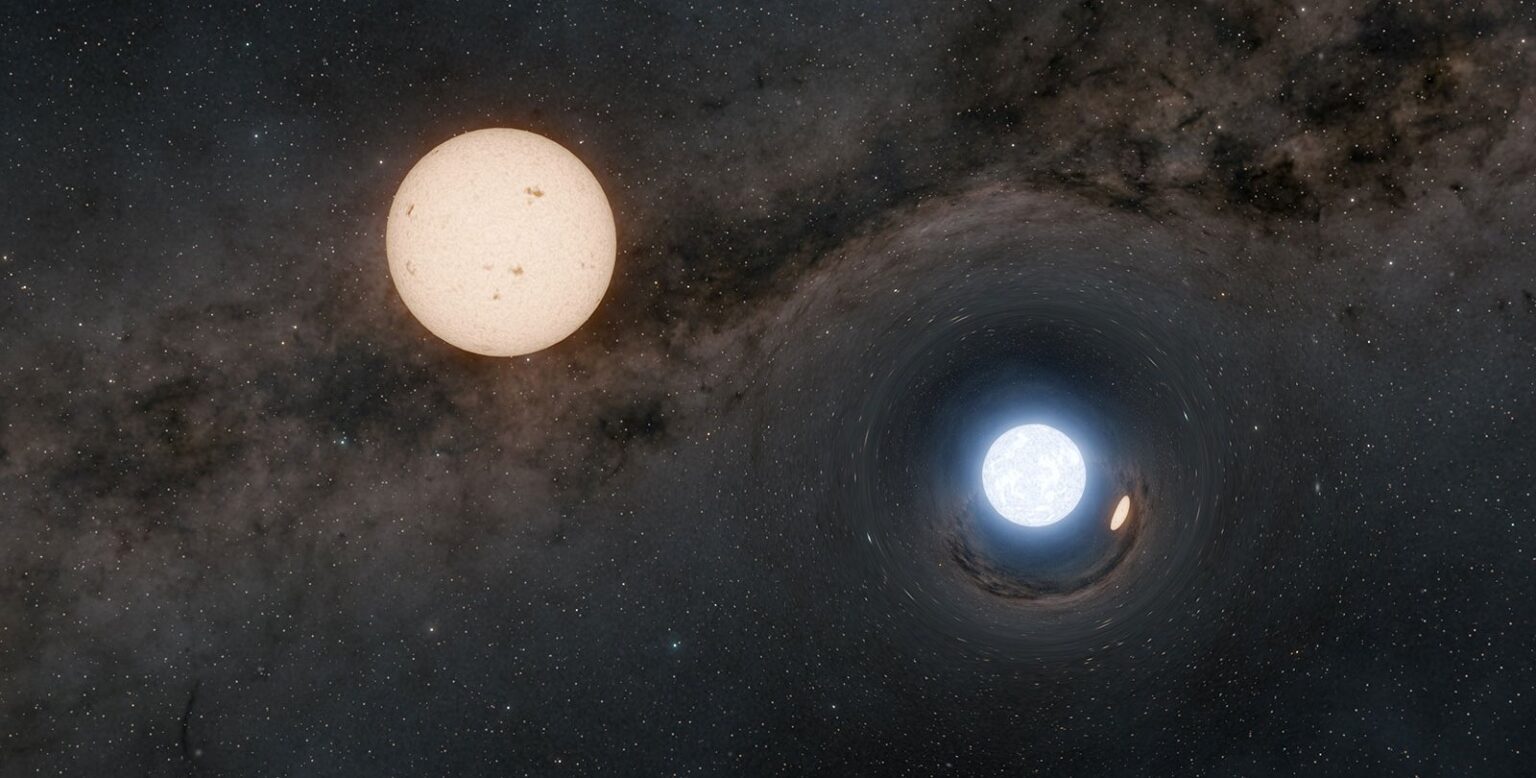Scientists usually detect neutron stars when they are part of close binary systems and actively interact with their companions. However, astronomers were recently able to find 21 systems in which these objects orbited at a significant distance from a sun-like star.

Neutron and sun-like stars
Usually when scientists talk about what might be orbiting a Sun-like star, their first interest is in planets, brown dwarfs, or at least other stars. But recently, a team of astronomers led by Kareem El-Badry of California Technological University found 21 systems that include a much more exotic object in addition to a luminary similar to our own.
We are talking about neutron stars — dense cores of stars that have erupted as supernovae. Scientists have been observing them for decades. Meanwhile, presence in binary systems is not rare for them. In fact, we know about most of them because they draw matter from another star onto themselves, and this process causes powerful radiation in the X-ray or radio range.
However, this requires the neutron star to be very close to its companion, and this is not always the case. The other neutron stars are not totally invisible, but it is quite difficult to see them. Still, scientists decided to look for them.
Gaia telescope research
The researchers collected a lot of data from ground-based instruments, but their main helper was the Gaia space telescope. This instrument is able to determine the position of stars in space with high accuracy. And thanks to this, it is able to pick up even their rather weak fluctuations.
And such fluctuations must necessarily arise in the case when a sun-like star and a black hole orbit around each other. At the same time, the mass of the invisible object, despite the fact that its size is measured in kilometers, will be greater than it, although not by much. That is, it will be a kind of “pair dance” around a common center of mass.
And exactly such a “dance” was found by scientists in 21 systems located at a distance of up to 3 thousand light years from us. They all have a neutron star 1 to 3 a.u. away from the companion. We can’t see it, but we know it’s there. In addition, the scientists have been able to estimate how common such binary systems are. According to their calculations, they include one of millions of Sun-like stars.
Some questions
While the discovery explains a lot about the world around us, it raises a lot of questions for El-Badry himself. In particular, they concern how such double systems could have arisen. After all, a neutron star must once have been a very massive luminary.
And it was somehow supposed to affect the sun-like companion or even throw it away. But scientists have found no trace of this. In addition, these luminaries must have somehow survived the supernova explosion that occurred near them.
Current theories claim that the force of the supernova explosion should tear the binary systems apart. But based on the study, it appears that at least some of them avoid a similar fate.
According to www.caltech.edu


